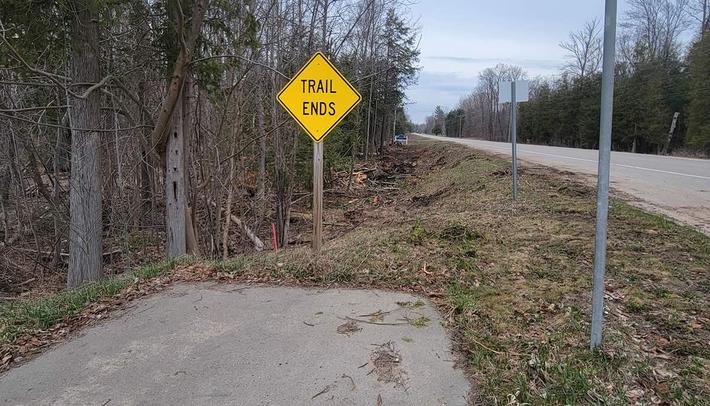
Extending a Hand to the Community
MSU Extension wants to provide the tools to live and work better in Michigan
By Ross Boissoneau | July 29, 2023
It’s 193 miles from Suttons Bay to East Lansing. Frankfort is 184 miles away, Gaylord is 171, and Traverse City clocks in at 180.
Yet the resources and expertise of Michigan State University are here in our communities, thanks to MSU Extension.
MSU Extension dates back over 100 years to 1914, when the Smith-Lever Act created extension programs in essentially every county across the nation with the goal to bring advances in agricultural practices and technology to rural Americans. Land-grant universities in each state oversee the programs.
“MSU is the original land grant college,” says Jennifer Berkey, who serves as the program’s District 3 director, one of 14 such individuals across the state.
Experiential and Educational Programming
So MSU Extension boasts a presence in every county in Michigan, but what does the Extension do, exactly? In short, it provides resources and expertise from the campus to communities and individuals in every part of Michigan. Efforts are concentrated in four general areas: agriculture and agribusiness; children and youth; health and nutrition; and community, food, and environment.
Within those areas, what MSU Extension offers differs from town to town and region to region because the needs of each local community are unique.
For example, take agriculture and agribusiness, which Berkey says is the part of MSU Extension that it’s best known for. “Agriculture is a huge part of northern Michigan,” she says. Her district encompasses Antrim, Benzie, Grand Traverse, Leelanau, Kalkaska, and Manistee counties and is home to plentiful apples, cherries, wine grapes, and hops.
In contrast, her counterpart in District 6, Eric Karbowski, says the Christmas tree industry is particularly strong in Missaukee and Wexford Counties. “Michigan is the third-largest Christmas tree-producing state in the country, with an annual economic value of $35 million,” he says. The state annually harvests two million trees, creating 2,300 jobs. “Because of this large industry, we have a Christmas tree educator, Bill Lindberg, who covers this area.”
The differences can be seen in the office staff as well. In Benzie County, the office includes a secretary, 4-H program coordinator, community nutrition instructor, and health and farm stress educator. In Emmet County, there is a 4-H program coordinator, a community food systems educator, and a tribal educator for tribal governance and leadership and community engagement. Residents in both counties—and across the state—have access to specialists in public policy education, sustainable agriculture, produce safety, and myriad other fields.
Berkey also points to the extension service’s work with young people as another area of impact. That includes the familiar 4-H projects, the “experiential, educational opportunities designed to connect in-school learning with out-of-school time activities,” as the Extension puts it. But the youth development arm of the Extension is more than animals at the fair. “It’s soccer in Benzie and Kalkaska, camp in Leelanau, fishing in Grand Traverse,” says Berkey.
District 14 Director Adam Koivisto says the Flying Clovers racing pigeon club is one of the popular 4-H programs in his district, which covers Alpena, Charlevoix, Cheboygan, Emmet, Montmorency, Otsego, and Presque Isle Counties. “Kids in the club all get pigeons, and one girl won an award from the Pigeon Racing Association,” he says.
Another popular program is the 4-H Swim School in Boyne City. It offers swim lessons and water safety instruction on Lake Charlevoix. Koivisto says Coast Guard and sheriff’s department offices swim with the kids along with the lifeguard instructors.
Investing in Healthy Communities
MSU Extension also offers community and economic development. Berkey says it works with township and county commissioners on governance and training. “That’s off people’s radar,” she says.
Another spot where MSU Extension shines: The program is a national leader in mental and emotional health. As part of its health and nutrition focus, it developed the Farm Stress program, which concentrates on helping those in agriculture deal with the pressure of depending on so many factors for their livelihood like weather, fluctuating prices for crops, disease, and caring for animals.
The Farm Stress program includes offerings like a teletherapy program that connects farmers in need with therapists at Pine Rest Behavioral Services; workshops like “Mending the Stress Fence,” aimed directly at helping farmers and their families; Facebook Live sessions for farmers called “Lunch Breaks,” held on MSU Extension’s Field Crops Facebook site every Wednesday; and free webinars, online factsheets, and educational articles.
“We were one of the first to tackle farm stress,” says Berkey. That includes the hiring of Dr. Remington Rice as a community behavioral health educator statewide, with a particular focus in Antrim, Benzie, Grand Traverse, Kalkaska, Leelanau, and Manistee counties.
Rethinking What Farming Looks Like
Speaking of farming, the pinkie corner of northern Michigan is unique in that it houses the Extension’s Northwest Michigan Horticultural Research Center. Dr. Nikki Rothwell heads the 137-acre center, located between Traverse City and Suttons Bay and between West Grand Traverse Bay and the south arm of Lake Leelanau.
There’s a huge focus on cherries at the center, of course, as the five-county region produces almost half of the U.S. supply of tart cherries and 83 percent of sweet cherry production in Michigan.
But the center goes beyond cherries, providing research and real-life examples of how farmers can improve all their crops and their lives as well. That includes everything from pest management, horticultural production and handling, and value-added processing to marketing and farm financial management practices.
Rothwell says there are many challenges in the fruit industry, including—perhaps especially—in cherries. Disease, low-priced imports, and the changing climate all make for a difficult job. The center has demonstration and research plots to help farmers think outside the box, or at least beyond the rows of the orchard, to what can benefit them economically.
“We have to rethink what fruit farming looks like. It doesn’t look like 1950,” Rothwell says. Indeed, the modern farm may need to diversify not only in terms of crops but in everything from adding a retail to a commercial kitchen.
Rothwell says the pandemic dealt a blow to the research center’s programs. While the pivot to the virtual world helped keep things going, she says the lack of personal connection made it difficult. “It’s hard to talk to a screen without a live audience. It’s a little more of a one-way street. You don’t get the side conversations, [people’s] interactions with their peers,” she says.
While now operating in a world in which the pandemic has receded, Rothwell says in-person attendance to events sponsored by the Research Center is still lagging. “This year, the Cherry Festival was really down,” she says of visits and farm tours the research center offers during the weeklong celebration of cherries. “It was down by at least half to a third from previous years.”
Meanwhile, attendance at the orchard and vineyard show it hosts each January at Grand Traverse Resort is rebounding. She says in 2021 the show was virtual, and in 2022 it was about half the pre-pandemic total. This year it was up to 350 attendees.
Yet those changes are reflective of the world beyond, where climate change, technology, and shifting tastes mean nothing is ever static. MSU Extension continues to evolve, while providing the expertise and resources of a world-class university to every area of the state. The sheer breadth of programming it offers and its continued growth and responsiveness to change indicate they are always ready to adapt to the times.
Learn more about the programs offered by MSU Extension at canr.msu.edu/outreach.
Trending

Walking in an Artsy Wonderland
Michigan Legacy Art Park is hosting the “Raindrops” artwork created by Dewey Blocksma and Patricia Innis at th... Read More >>
Seven Takeaways from Local Real Estate Agents for the Spring/Summer Market
The last few years in local real estate have been akin to what one local agent described as the “wild west,” w... Read More >>
Blazing the Boyne City to Charlevoix Trail
We’re getting ever closer to an interconnected northern Michigan thanks to ongoing work on the Boyne City to Charlev... Read More >>


